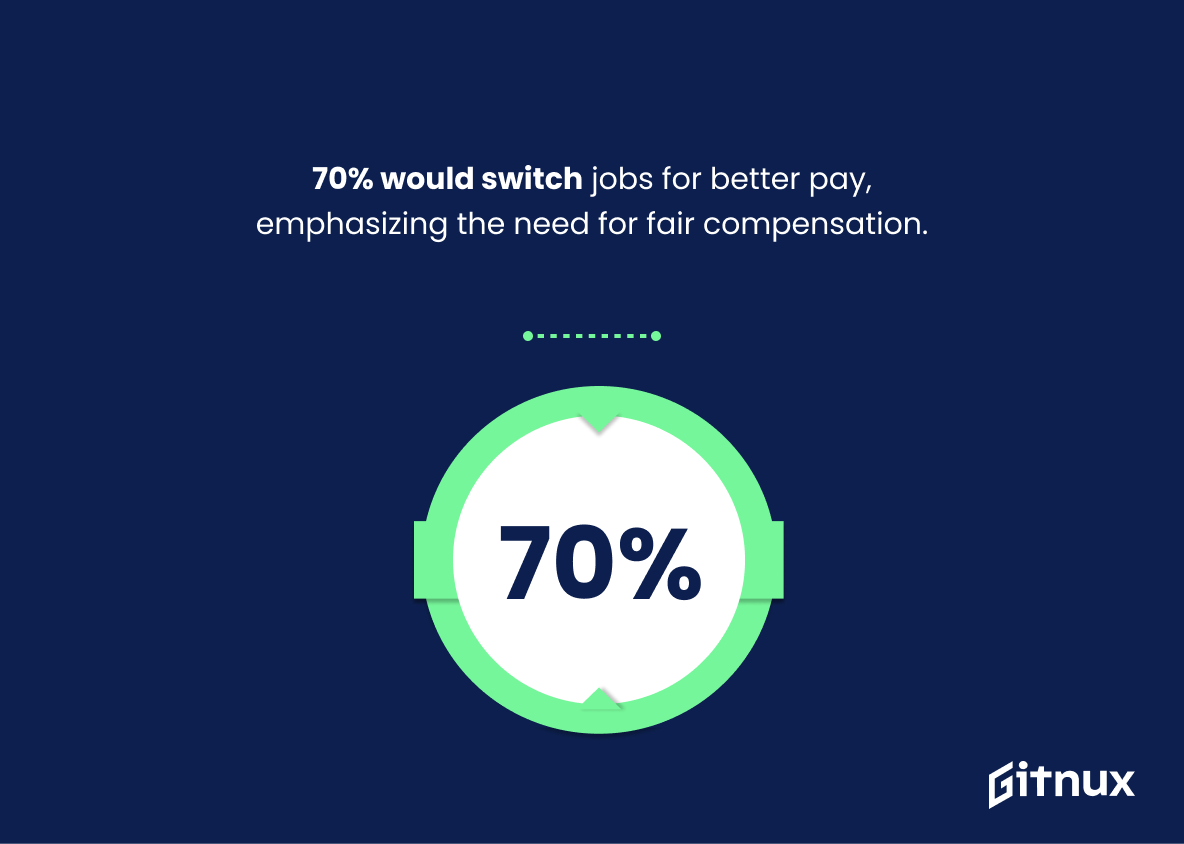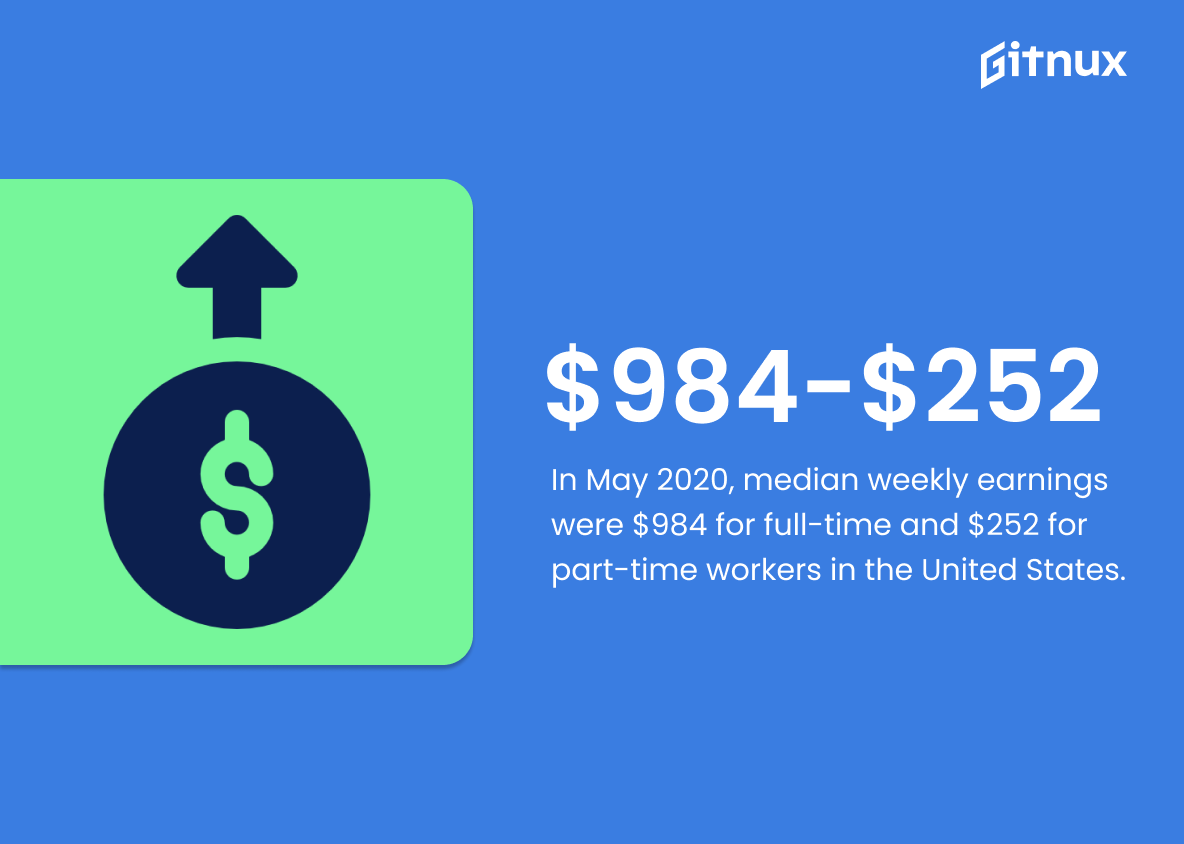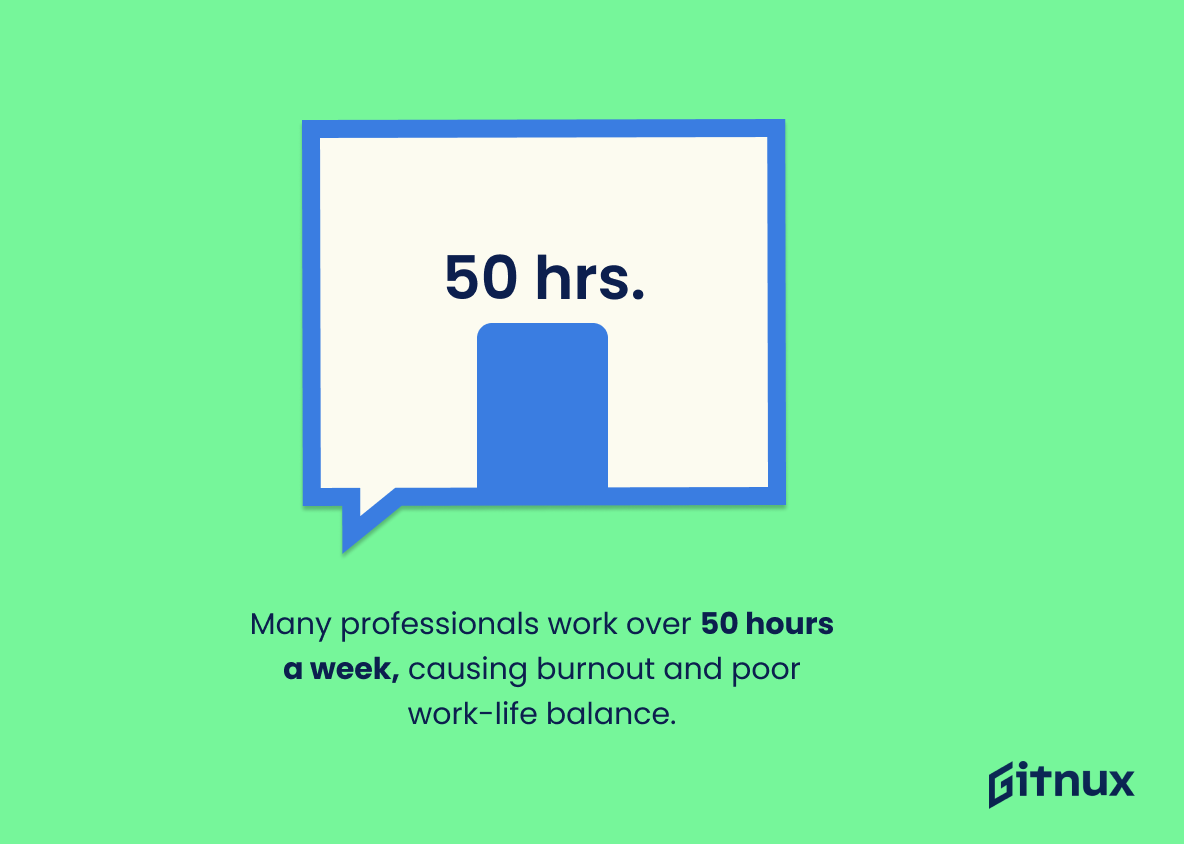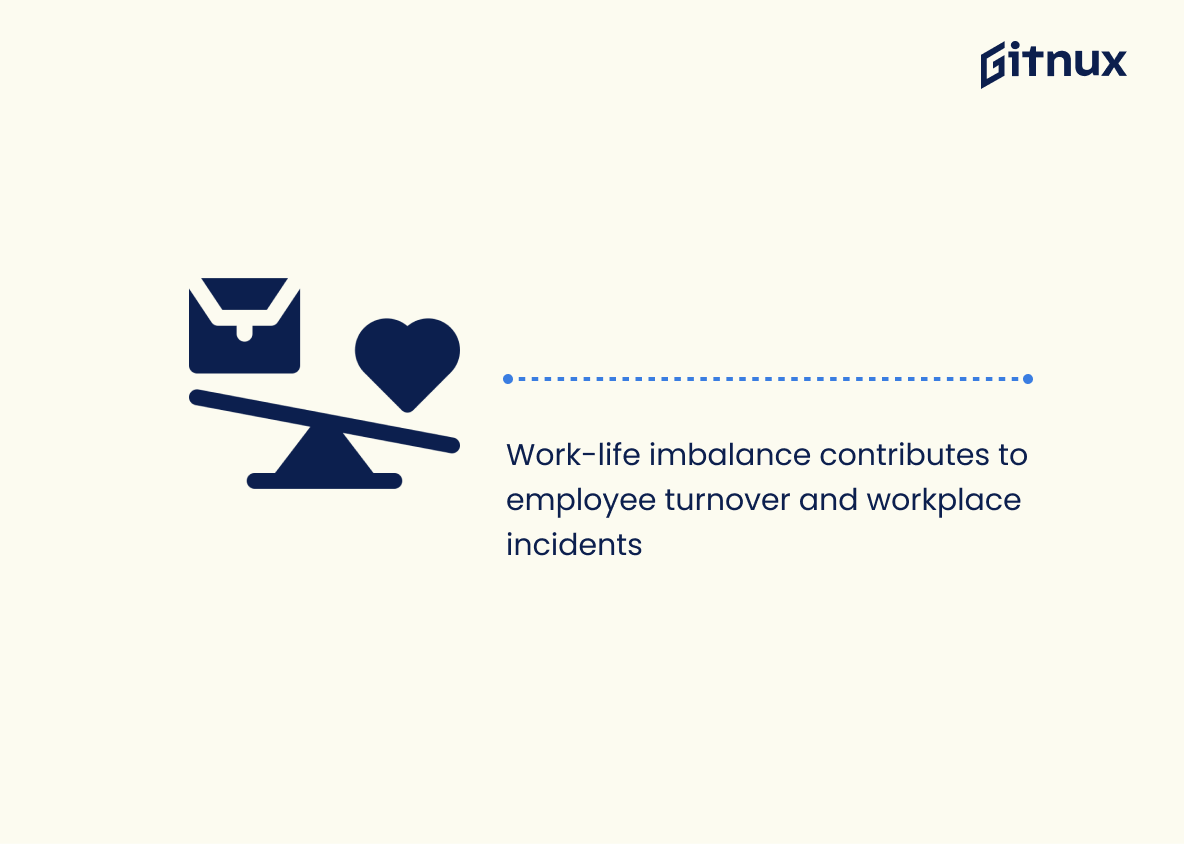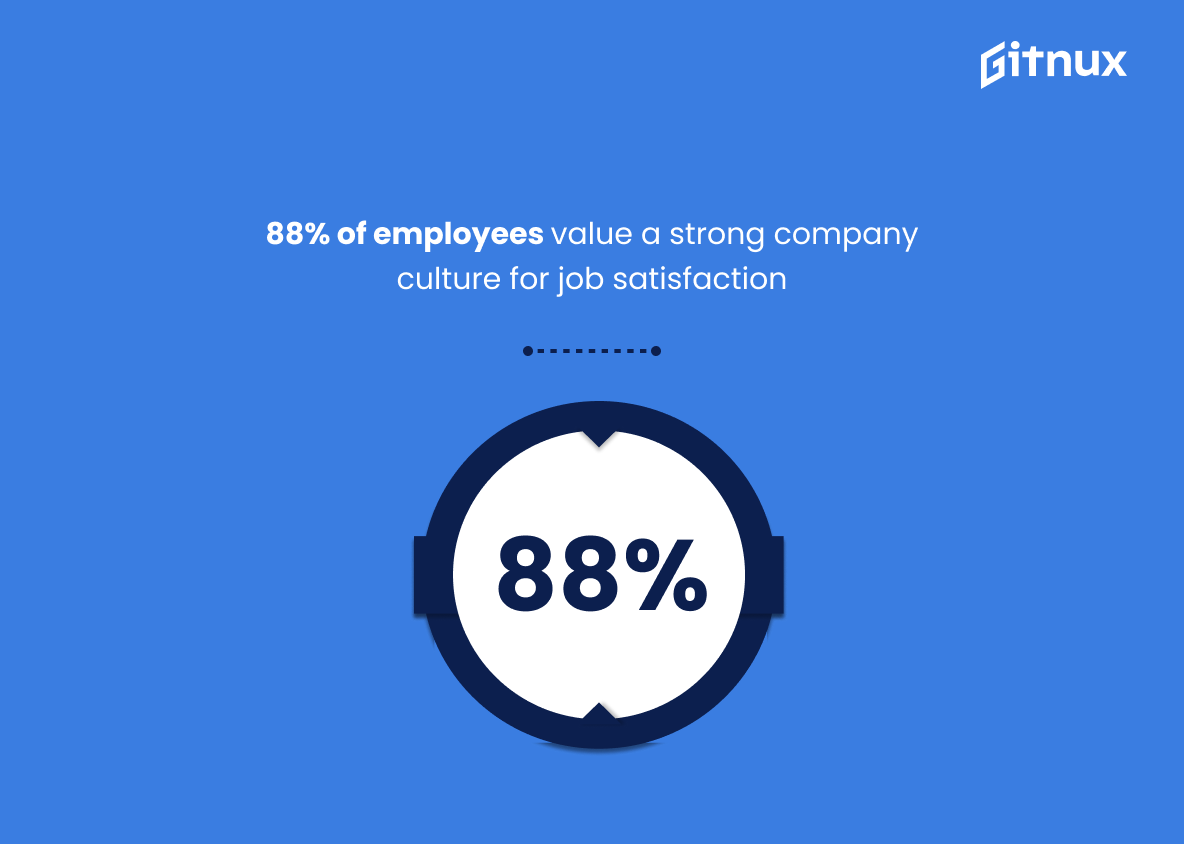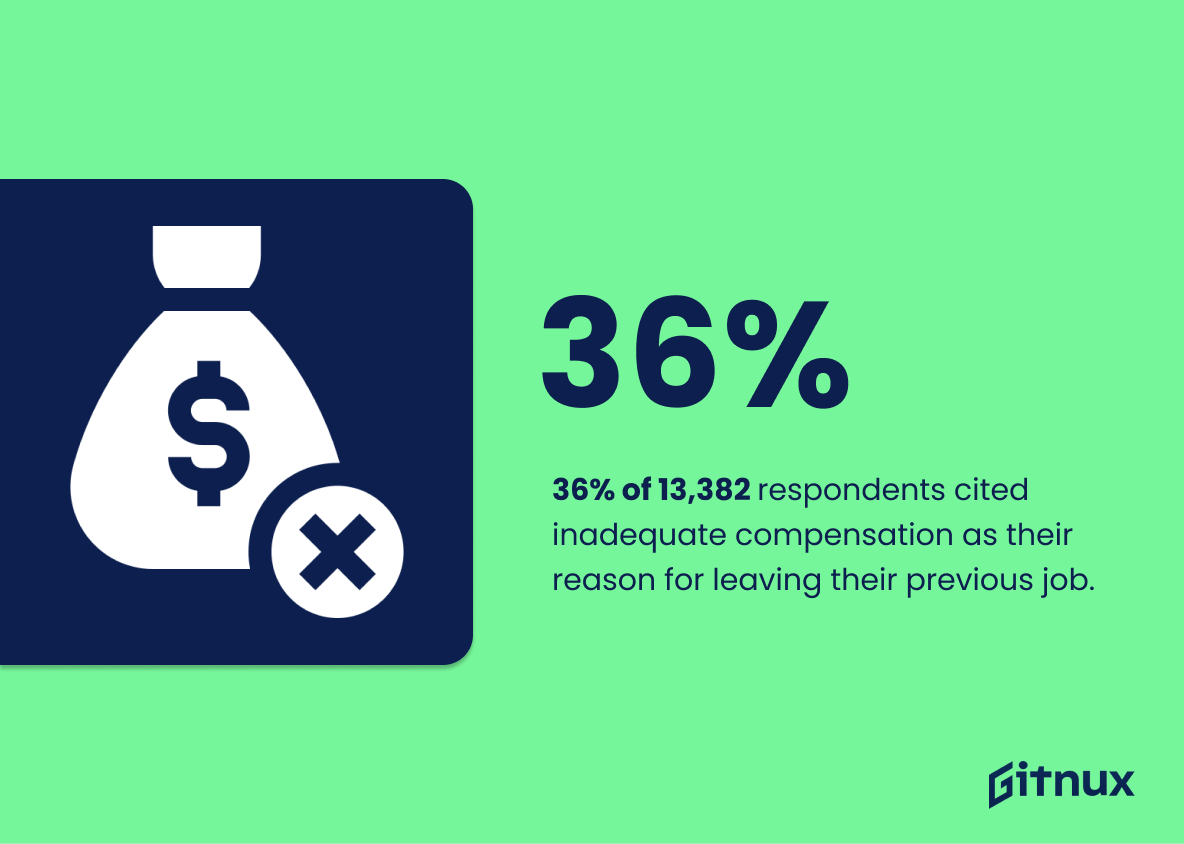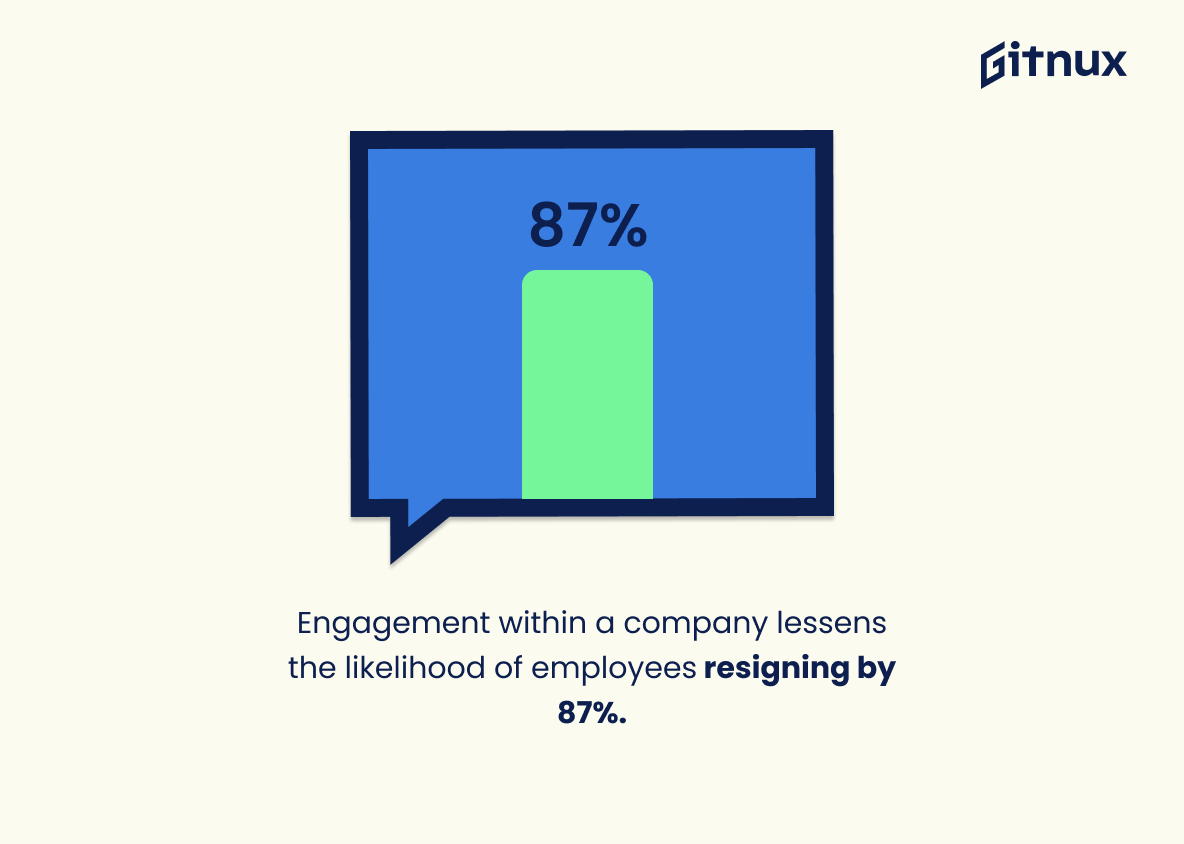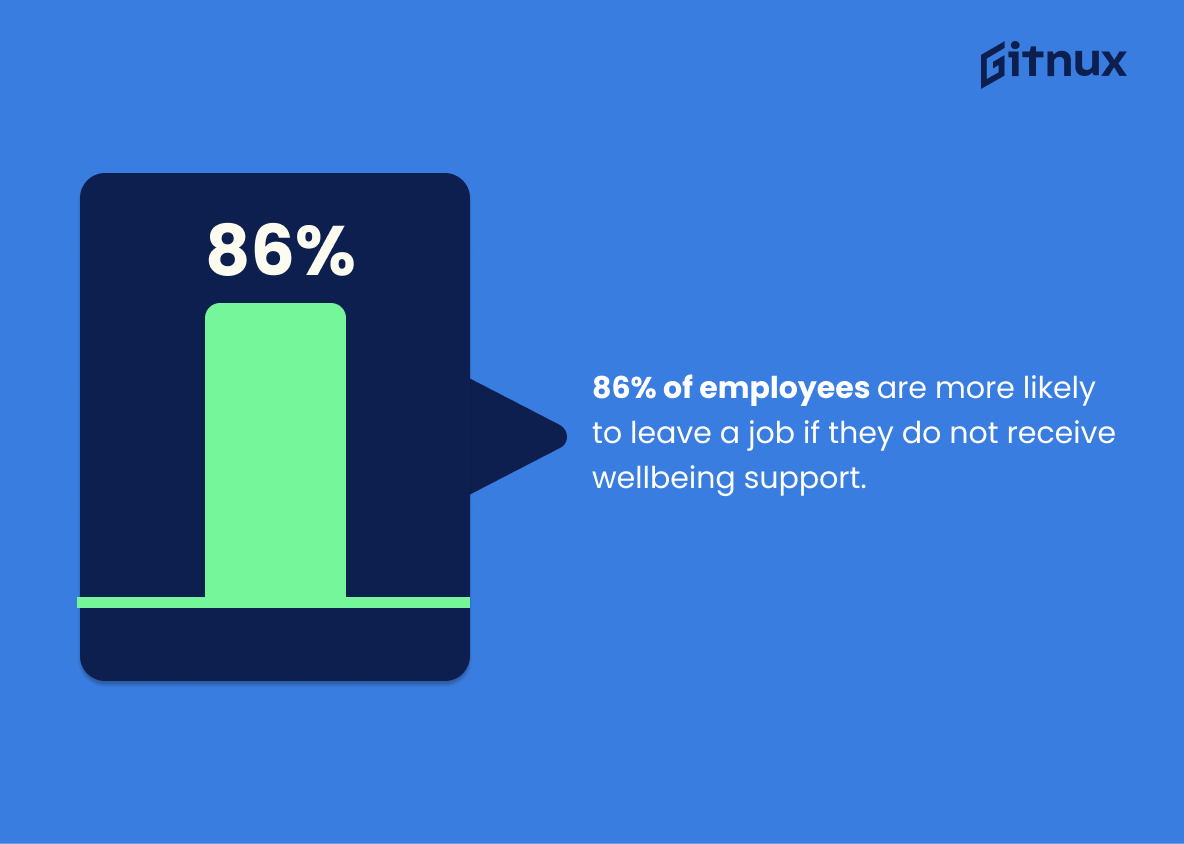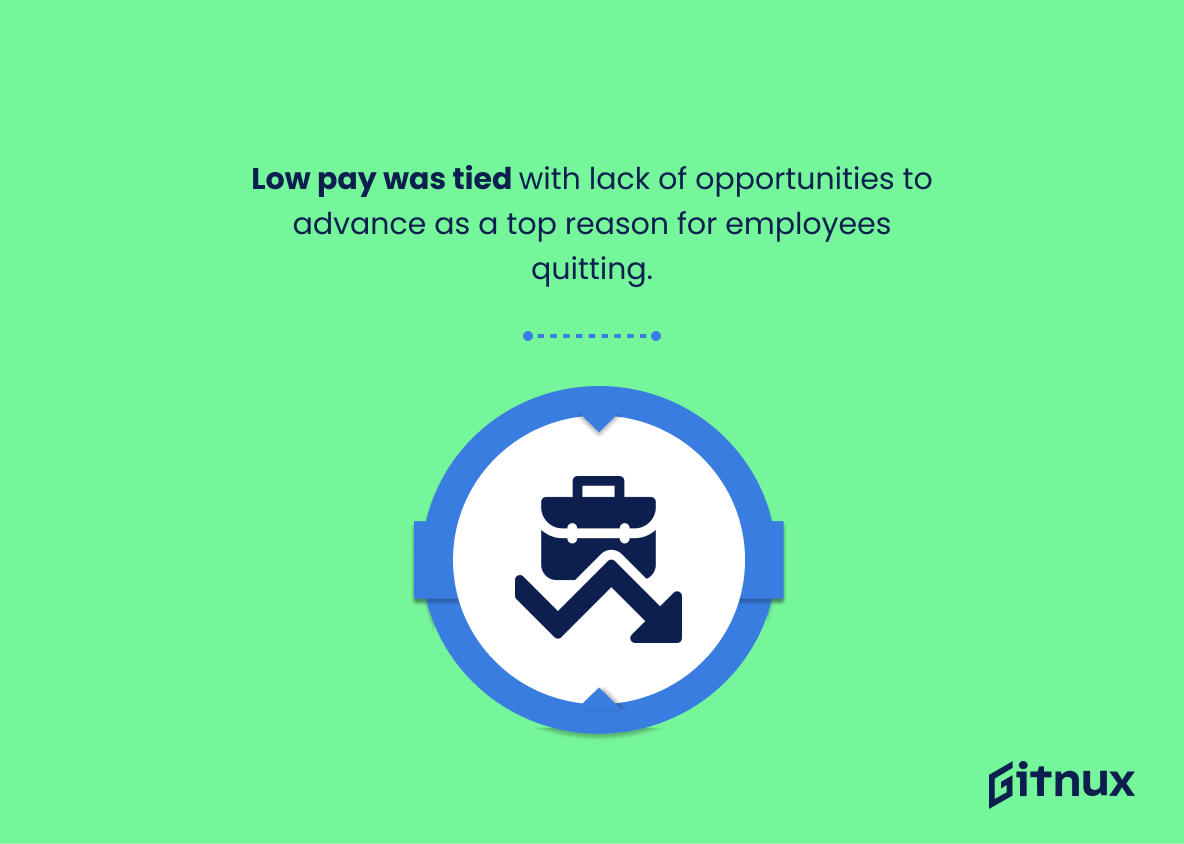Employee turnover is a major issue for many businesses, and it can have a significant impact on the bottom line. Understanding why employees quit is essential for any business that wants to keep its staff engaged and productive.
In this blog post, we’ll take a look at some of the most recent statistics on why employees quit and what employers can do to address the issue. We’ll also explore some of the most common reasons why employees leave their jobs, and how employers can create an environment that encourages employee retention.
Why Employees Quit: The Most Important Statistics
77% of adults in the US consider a company’s culture before applying for a job, highlighting the importance of having a strong and positive culture to attract top talent.
Millennials are twice as likely to quit their job if their work environment isn’t flexible post-pandemic.
Why Employees Quit Statistics Overview
Investing in employees’ career growth is key to retaining top talent and improving employee morale and productivity.
Knowing this can help to reduce turnover rates and ensure that employees remain engaged and motivated to do their best work. Additionally, it can help to create a positive work environment, which can lead to increased job satisfaction and productivity.
A lack of career development opportunities is a significant factor in employee turnover, as employees are more likely to look for employment elsewhere when they feel that there are no opportunities for advancement.
By understanding the factors that contribute to employee turnover, employers can take steps to create a more positive work environment and provide employees with the resources they need to grow and develop professionally.
50% of employees leave their jobs to get away from their manager, emphasizing the importance of good management for employee retention.
This highlights the crucial role that managers play in retaining talent. It suggests that having a good manager is not only important for employee engagement and productivity, but also for retention.
This also shows that managers have a direct impact on employee retention, and that it is important to ensure that managers are well-equipped to handle their roles.
77% of employee turnover is due to poor management, emphasizing the importance of investing in effective management training and support.
Thus, there is the need for organizations to prioritize building strong and supportive management teams to retain employees and avoid the costs associated with turnover. Poor management can lead to employee dissatisfaction, which can lead to higher turnover rates and increased costs for the organization.
Investing in effective management training and support can help organizations create a more positive work environment and reduce turnover.
70% of employees would leave their current job for one that pays better, which indicates the importance of fair compensation for employee retention.
Companies that do not offer competitive salaries may experience high turnover rates due to employees leaving for better pay. Employers should take this into account when setting wages and consider offering other incentives to retain their employees.
The median weekly earnings for full-time and part-time workers in the United States was $984 and $252 respectively in May 2020.
This highlights the potential income disparity between full-time and part-time employees, which could contribute to employee turnover.
This is important because it shows that employers should consider offering fair compensation to full-time and part-time employees to reduce turnover risk and improve employee satisfaction.
A large percentage of working professionals are working more than 50 hours per week, and nearly half of them are working more than 65 hours per week, leading to burnout and dissatisfaction with work/life balance.
This highlights the importance of employers prioritizing work/life balance for their employees, as it can reduce turnover and improve employee satisfaction. This is important, as it can help employers identify potential areas of improvement that could reduce employee turnover.
The American Institute of Stress found that work-life imbalance is a major contributor to employee turnover and workplace accidents and errors.
Employers who prioritize reducing stress for their employees, including through promoting work-life balance, may be able to improve retention and reduce workplace errors and accidents.
77% of adults in the US consider a company’s culture before applying for a job, highlighting the importance of having a strong and positive culture to attract top talent.
Having a strong and positive culture is essential for employee retention. If a company has a negative or weak culture, employees are more likely to quit due to feeling unvalued or unsatisfied with their job.
On the other hand, having a strong and positive culture can help to create a positive work environment, which can lead to increased employee satisfaction and retention.
88% of employees believe that a strong company culture is important to their overall job satisfaction.
59% of employees consider leaving their employment due to low salary, and 47% of employees quit to seek better pay. Salary is therefore a major factor in employee retention, and that employers should consider offering competitive salaries to keep their employees.
36% of 13,382 respondents cited inadequate compensation as their reason for leaving their previous job.
Over 1 million employees have left their jobs in 2022 due to lack of motivation.
It shows that when employees are not motivated, they are more likely to leave their job, which can have a negative impact on a company’s productivity and overall success. Additionally, knowing this can help employers understand the importance of providing their employees with a motivating work environment in order to retain them.
Engagement within a company lessens the likelihood of employees resigning by 87%.
It shows that when employers prioritize engagement, they can significantly reduce employee turnover and the associated costs.
50% of US employees have resigned due to mental health concerns in 2021.
Thus, there is a strong need for companies to prioritize their employees’ physical and mental wellbeing, as the stress and confusion caused by the Covid-19 pandemic has had a negative impact on people’s wellbeing.
86% of employees are more likely to leave a job if they do not receive wellbeing support.
If employers do not prioritize mental health and comfort, it could lead to a high turnover rate as employees may be more likely to leave their job. Therefore, employers should strive to create a workplace environment that is supportive of mental health and wellbeing in order to retain employees.
Low pay was tied with lack of opportunities to advance as a top reason for employees quitting.
Employees are not just looking for higher pay, but also for opportunities to grow and advance in their careers. This highlights the importance of providing employees with career development opportunities in order to retain them.
1/3 of employees resigned due to lack of development opportunities, not learning any new skills.
If employees do not feel that they are learning and developing in their current role, they are more likely to look for opportunities elsewhere. Employers should strive to provide employees with the resources and support they need to grow and develop in their roles in order to retain them.
Millennials are twice as likely to quit their job if their work environment isn’t flexible post-pandemic.
This highlights the need for employers to be flexible with their work environment in order to retain their millennial employees.
With the pandemic, hybrid work environments have become the norm and it is important for employers to be aware of this and make changes to their work environment to ensure that their millennial employees are satisfied with their job.
This shows the importance of understanding why employees quit and making sure to address those issues in order to retain them.
4/5 workers want flexibility in work post-pandemic and 47% would consider changing workplaces due to lack of flexibility.
Thus, flexibility is a key factor for employees when considering their job satisfaction and whether to stay with their current employer or look for a new job.
75% of employees quit due to their managers, not the job itself.
Managers have a direct influence on employee retention, and that a lack of good management can lead to a high turnover rate. This is an important point to consider when discussing why employees quit, as it emphasizes the need for employers to invest in their management teams and ensure they are providing the best possible support to their staff.
79% of employees mention lack of appreciation as a key reason for quitting.
When employees feel unappreciated, they are more likely to leave their job. This is an important insight for employers to consider when looking to retain their staff and create a positive work environment.
31% of employees left their job within the first six months.
This highlights the need for employers to take proactive steps to ensure that their employees are satisfied and engaged in their work. By understanding why employees are leaving, employers can take steps to improve their workplace environment and create a culture of loyalty and commitment.
22% of employee turnover takes place in the first 45 days of employment.
Employees feel supported and valued. It also serves as a warning that if employers do not take the necessary steps to ensure a successful onboarding process, they may be at risk of losing valuable employees within the first 45 days.
46% of employees who quit their job cite lack of career growth opportunities.
This highlights the need for employers to provide employees with the opportunity to develop and progress in their careers, or risk losing them to other companies. This statistic is a powerful reminder that employees need to feel that their career is progressing in order to stay motivated and engaged in their work. It is an important factor to consider when creating a workplace environment that encourages employee retention.
36% of employees said they would consider leaving their job due to a lack of work-life balance.
A significant portion of employees are willing to leave their job if they feel their work-life balance is not being respected. This is a key factor in employee retention and should be taken into consideration when creating policies and procedures in the workplace.
Women (25%) slightly outpace men (20%) in quitting jobs to pursue other opportunities.
Women are more likely to take risks and make bold moves in pursuit of their goals, which can be a powerful motivator for other women to do the same. This statistic is an important reminder that women have the potential to make a real impact in the workplace and should be encouraged to do so.
41% of employees leave their job due to poor job fit.
By understanding why employees quit, employers can take steps to create a better working environment and ensure that their employees are in roles that are a good fit for them.
72% of younger employees cited inadequate salary as the primary reason for leaving their job.
A significant portion of younger employees are leaving their jobs due to inadequate salary, which suggests that employers should prioritize salary when it comes to employee retention. This statistic is especially relevant in a blog post about Why Employees Quit Statistics, as it provides insight into one of the most common reasons why employees quit their jobs.
65% of employees said remote work flexibility would give them an increased reason to stay in their current job.
Providing employees with the option to work remotely can be a major factor in keeping them in their current job. This is especially relevant in the context of why employees quit statistics, as it implies that offering remote work flexibility could be an effective way to reduce employee turnover.
21.5% of employees who don’t feel recognized when they do great work report they’ve quit a job for that reason.
When employees don’t feel appreciated, they are more likely to leave their job. This is an important statistic to consider when discussing why employees quit, as it shows that recognition is a key factor in employee retention.
Approximately 47% of HR leaders cite employee retention and turnover as their top challenge.
This is a major challenge for them, and one that they are actively trying to address. This is an important point to consider when discussing why employees quit, as it shows that employers are aware of the issue and are taking steps to try and prevent it.
51% of employees quit due to feeling disengaged with their job.
This highlights the need for employers to create an environment where employees feel connected to their work and valued for their contributions. By understanding why employees quit, employers can take steps to ensure that their employees are engaged and motivated to stay.
35% of employees leave their job because of a lack of proper training.
Without proper training, employees may feel unprepared or overwhelmed in their roles, leading to a higher likelihood of them leaving their job. This statistic is a powerful reminder of the need for employers to prioritize training and development for their employees.
Companies that don’t support remote work have a 50% higher employee turnover rate.
This is especially relevant in today’s world, where remote work has become increasingly popular and necessary. By understanding this statistic, employers can make informed decisions about how to best support their employees and keep them engaged and satisfied.
40% of employees quit due to lack of promotions or opportunities for growth.
This highlights the need for employers to create a workplace environment that encourages employees to stay and grow, rather than one that leads them to feel stagnant and unfulfilled. By understanding why employees quit, employers can take steps to ensure that their employees are engaged and motivated to stay.
Job stress accounts for 12% of employee turnover.
By understanding the role of job stress in employee turnover, employers can take steps to create a healthier and more productive work environment, which can help to reduce turnover and improve employee satisfaction.
32% of employees quit their job due to a lack of strong company culture.
When employees don’t feel connected to their workplace, they are more likely to leave. This is why it is essential for employers to create an environment that fosters a sense of belonging and encourages employees to stay.
Conclusion
In conclusion, it is clear that employees quit for a variety of reasons. From not feeling valued to not having enough opportunities for growth, there are many factors that can lead to an employee leaving a job.
While it is impossible to predict when an employee will quit, understanding the common reasons why employees quit can help employers create an environment that supports and values their employees. By understanding the statistics behind why employees quit, employers can take steps to create a workplace that is more likely to retain its employees.
References
1 – https://business.linkedin.com/content/dam/me/business/en-us/talent-solutions/resources/pdfs/UltimateListofEmployeRetentionStats.pdf
2 – https://www.shrm.org/hr-today/trends-and-forecasting/research-and-surveys/Documents/Employee%20Job%20Satisfaction%20and%20Engagement%20Report.pdf
3 – https://www.gallup.com/workplace/238065/state-american-manager-report.aspx
4 – https://info.workinstitute.com/hubfs/2020%20Retention%20Report.pdf
5 – https://www.glassdoor.com/blog/new-survey-70-of-employees-will-leave-their-job-for-one-that-pays-better/
6 – https://www.bls.gov/opub/ted/2021/median-weekly-earnings-of-full-time-wage-and-salary-workers-by-detailed-occupation-and-sex-first-quarter-2021.htm
7 – https://hbr.org/2015/08/the-research-is-clear-long-hours-backfire-for-people-and-for-companies
8 – https://www.stress.org/stress-at-work
9 – https://www.glassdoor.com/employers/blog/why-is-company-culture-important/
10 – https://www2.deloitte.com/us/en/insights/topics/organizational-culture/culture-strategy-why-culture-needs-a-strategy-too.html
11 – https://www.forbes.com/sites/bryanrobinson/2022/05/03/discover-the-top-5-reasons-workers-want-to-quit-their-jobs/?sh=7a7e2b895d46
12 – https://www.statista.com/chart/27830/reasons-for-quitting-previous-job/
13 – https://www.mirror.co.uk/money/jobs/top-reasons-workers-quit-jobs-25932451
14 – https://teamstage.io/motivation-statistics/
15 – https://www.hcamag.com/us/specialization/benefits/half-of-employees-quit-their-job-for-their-mental-health-in-2021/326840
16 – https://www.hcamag.com/us/specialization/benefits/half-of-employees-quit-their-job-for-their-mental-health-in-2021/326840
17 – https://www.uschamber.com/co/run/human-resources/top-reasons-why-employees-quit
18 – https://www.workstars.com/recognition-and-engagement-blog/2020/03/19/why-employees-quit-11-evidence-based-reasons/#career
19 – https://www.ey.com/en_gl/news/2021/05/more-than-half-of-employees-globally-would-quit-their-jobs-if-not-provided-post-pandemic-flexibility-ey-survey-finds
20 – https://www.peoplemanagement.co.uk/article/1747315/half-employees-would-quit-without%20flexible-working-post-pandemic-poll-finds
21 – https://www.owllabs.com
22 – https://business.linkedin.com
23 – https://gethppy.com
24 – https://www.ebix.com
25 – https://www.officevibe.com
26 – https://workinstitute.com
27 – https://www.builtin.com
28 – https://www.hcareers.com
29 – https://www.tinypulse.com
30 – https://www.randstad.com
31 – https://www.talentworks.com
32 – https://www.pewsocialtrends.org
33 – https://www.shrm.org
34 – https://www.gallup.com
35 – https://blog.clearcompany.com
36 – https://blog.accessperks.com
37 – https://zapier.com




